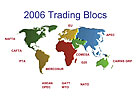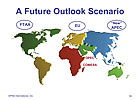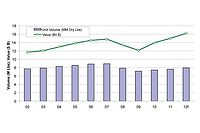

There is now another factor to consider that has an impact on both the short- and long-term growth of business: the continuing development of trading blocs and trade agreements. How will this affect the adhesives and sealants industry?
Historically, trading blocs were formed to temporarily stimulate new business by creating or opening new markets and introducing new products without the impairment of high duties or other restrictions on trade between countries, usually within a geographic region.
In 1947, there was a need to organize a common mechanism for settling trade disputes between countries. The General Agreement on Tariffs and Trade (GATT) was formed, and it currently has 110 member countries.
Geographically oriented trade agreements started several years ago in Europe with the formation of the European Common Market, which has since evolved into the European Union, followed later by the Asia-Pacific Economic Cooperation forum (APEC) and, soon after, the North American Free Trade Agreement (NAFTA). In 1995, the World Trade Organization (WTO) was established to make foreign trade more transparent within and outside of these agreements. It provides rules and a common platform for governing the trading process. So far, 147 countries have joined the WTO. Unlike GATT, which is governed by consensus, the WTO is a legal entity.
There are currently 27 functional trading blocs and 16 free trade agreements around the globe, with 10 more being proposed or in process of being approved. There are another 30 bilateral trade agreements in place between two countries. The United States alone has 16 additional bilateral agreements in force.

Various bilateral side agreements are currently blurring the lines established by trading blocs and their original free-trade agreements. Three major regional trade agreements will soon emerge - the FTA (Free Trade Americas), the EU (which will include member countries from the former Soviet Union) and a "new" APEC, which will most likely exclude Japan. Two other trade agreements that could survive are the Organization of the Petroleum Exporting Countries (OPEC) and the Common Market for Southern and Eastern Africa (COMESA).
The effect on the adhesives and sealants industry is already under way. Formulators are forced to follow their customers into these regions to maintain their local/regional market and supply positions. Also in evidence is the development of trade barriers restricting new company entry, such as the recent REACH program in Europe, leading to more preferential treatment of local suppliers/formulators. This will lead to a diminishing trade by export/import means.
